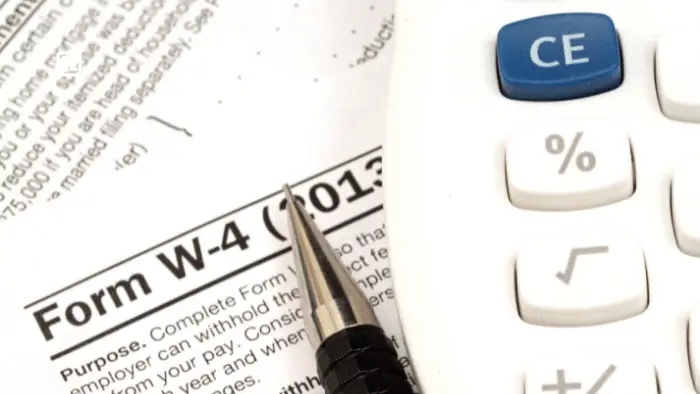Most employees will come across a form W-4 in their lifetime. Nonetheless, most people don’t recognize the true power that a Form W-4 has when it comes to their tax bill.
In this article, we’ll explain how to fill out an IRS Form W-4 to get the most out of your taxes.
What Is the IRS Form W-4?
Another term for the IRS W-4 form is the “employee’s withholding certificate.” It is a form that employees fill out when they start a new job. The goal of Form W-4 is to let your employer know how much tax to withhold from your paycheck.
Employers use the information on your W-4 form to calculate payroll tax withholding. It isn’t necessary to fill out Form W-4 every year if you already have one on record with your employer.
The only time you’ll need to fill out a W-4 form is when you start a new job or if you would like to make adjustments to your withholding. Sometimes it makes sense to revise your Form W-4 for specific tax purposes.
Otherwise, once you’ve filled out your W-4 form for your employer, you won’t have to do it again.
Changes to Form W-4
In previous years, employees could claim allowances. Form W-4 allowed employees to decrease the amount of money withheld on each paycheck. The more allowances an employee claimed, the fewer taxes were withheld.
In the 2017 Tax Cuts and Jobs Act overhauled tax laws and suspended the concept of personal exemptions. This change forced the IRS to rethink tax withholding guidance and prompted a new Form W-4. A new Form W-4 was introduced in 2020.
How to Fill out an IRS Form W-4
The Form W-4 is available on the IRS website. Follow these steps to learn how to fill out an IRS Form W-4.
Step 1: Fill Out Your Personal Information
The first step when filling out Form W-4 is to fill out your personal information. Make sure to enter your full name, address, and your social security number.
You’ll also need to fill in your tax filing status. Your tax filing status includes options like:
- Single or Married filing separately
- Married filing jointly or Qualifying widow(er)
- Head of household (for unmarried people who pay more than half of the cost for keeping up a home)
Step 2: Make Sure to Account for Multiple Jobs
If you work more than one job, you’ll want to make sure to account for your other employment. If you file jointly and your spouse also works, follow the instructions below:
Single With Multiple Employers or Married and Filing Jointly with a Spouse who works:
- In most cases, you’ll have a Form W-4 on file for both employers.
- Fill out steps 2 through 4(b) of the form for your highest earning job. For other jobs where you make less, leave those lines blank.
If you don’t wish to disclose to your employer that you have a second job or you have income from other non-job sources, do this instead.
- Instruct your employer to withhold more money from your paycheck on line 4(c)
- Conversely, you can also choose not to factor the extra pay into your Form W-4. Instead of having extra come out of your paycheck, estimate quarterly tax payments to send to the IRS.
Step 3: Claim All Dependents, Including Children
If your income is under $200,000 (or $400,000 for married couples), enter how many kids and dependents and multiply them by your credit amount.
- Multiply the number of qualifying children under age 17 by $2,000
- Multiply the number of other dependents by $500
You may want to check in about the rules for the child tax credit and for claiming tax dependents.
Step 4: Refine Your Withholdings
If you wish to have more taxes withheld or expect to claim deductions other than the standard, you should note that on your Form W-4.
Step 5: Complete your Form W-4 with your signature and date
After you have completed the rest of the form, all that’s left is to sign and date it. Your employer will keep a copy in your personnel file. This form is not submitted to the IRS.
Extra Tips
If you’re looking for extra tips to owe less on your taxes, here are a few things you can change on your Form W-4:
- Reduce the number of dependents on your form.
- Add an extra amount to withhold from your paycheck on line 4(c).
If you got a large refund and want to keep more money in your pocket with each paycheck, follow these steps on your Form W-4:
- Increase your number of dependents
- Decrease the number on line 4(a) or 4(c)
- Increase the number on line 4(b)
Using these tips, you should have more control over the taxes you withhold or pay at the end of the year.
Want to Level Up Your Accounting This Year?
Are you a new startup, professional firm, or high-net-worth individual? Proseer can help. We offer services to support and empowered businesses and individuals.
If you have any questions about your tax withholding and payroll please, contact us, or call 954-686-8687.

